| Intermediate Technology Education | Energy and Power Technology | Pre-Design | Topic 3 | Activity 3 |
Force
- Define force
- Investigate the applications of force in technological problems and solutions
Force
Force is an influence on an object caused by another object. Force is an interaction between 2 or more objects that causes a change in the position or motion of the objects.
Types of Forces
There are two general types of forces
- Direct forces, which occur as a result of direct contact between two or more objects
- Indirect forces, which occur between two or more objects even though they do not come into direct contact
Direct Contact Forces
Three of the direct contact forces are
- Applied Force
- Friction Force
- Tension Force
Applied Force. As the name implies, this is the force
imparted to an object by an other object (or person). The force is
generally a push or a pull. Examples of applied force are shown below.
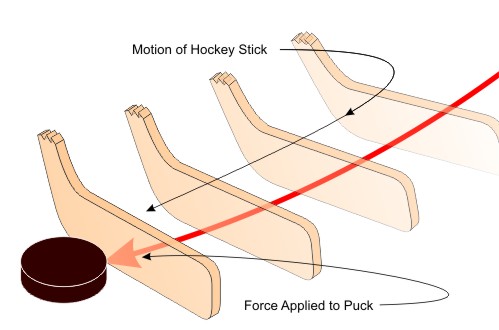
Figure Direct Force [Push] Shooting a Hockey Puck (you apply a force to a stick, the stick applies the force to the puck)
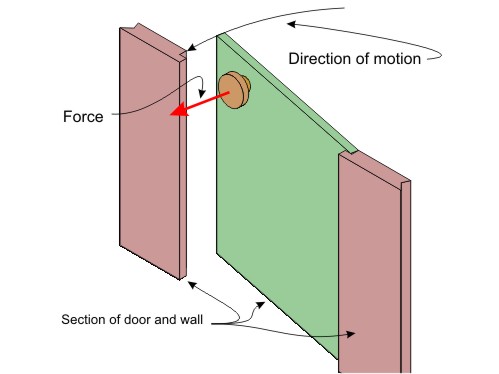
Figure Direct Force [Pull] Closing a Door
The effect that the force has on the object depends on the amount of force and the mass of the object it is being applied to. If the puck's mass is doubled, the same force will have less effect (the puck will be moved more slowly and a shorter distance). In the case of the door, think of lightweight doors you have opened and closed. Compare that to heavy doors you have opened and closed. Which one required more force to move?
Friction Force. Friction is a property of a surface that is related to the smoothness or roughness of the surface. Frictional force occurs when two surfaces are in direct contact and one is moved across the other. Frictional force acts in the opposite direction of the motion of one surface relative to the other.
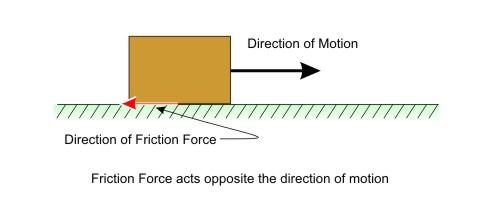
Figure Friction Force is opposite the direction of motion
The amount of friction force is related to the relative smoothness of the surfaces in contact. Rougher surfaces generally mean more friction. Compare walking on dry pavement to walking on icy pavement. The amount of friction a surface has is called its coefficient of friction. Pavement has a high coefficient of friction and ice has low coefficient of friction.
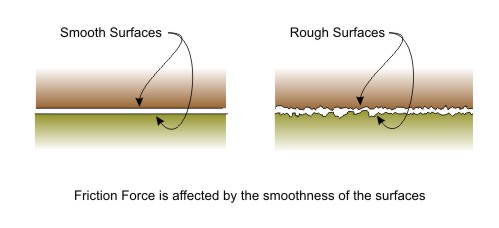
Figure Friction Force is related to Surface Roughness
Friction force is also related to the how much force is pressing the surfaces together. Higher force pressing the surfaces together generally means more friction.
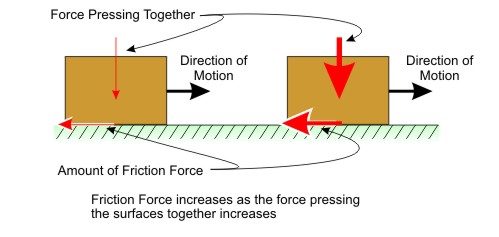
Figure Friction Force is related to force pressing the surfaces together
Tension Force. Tension force is transmitted through a flexible material such as a string or cable when it is pulled tight.
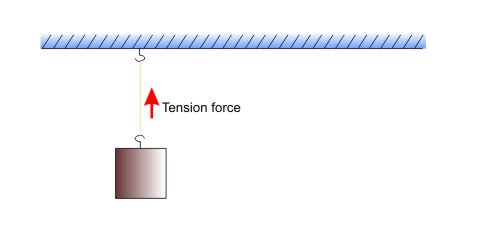
Figure Tension Force occurs when force pulls along a flexible material or a structural member of a framework
Indirect Forces
Indirect forces are
- Gravity Force
- Electric force
- Magnetic force
In this activity we will look only at gravity force.
Gravity Force. Gravity is the force of attraction between the masses of two or more objects. Generally it is only noticeable for very massive bodies such as stars, planets and moons—and everything that comes close to their gravitational fields. The earth's gravitational force is far greater than that of any objects in its immediate vicinity, so we observe the effects of gravity as "objects fall to the earth". Gravitational attraction maintains the orbits of the planets around the sun, and of the various moons around the planets. It also keeps the hundreds of communications satellites, and the space station, in orbit around the earth. And, it is the force of gravity that must be overcome to lift satellites and people into space.
We personally experience gravity as weight.
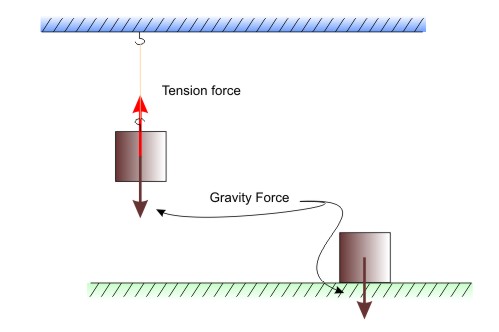
Figure Gravity Force is the force of attraction between two or more masses
Force is Directional
Force is directional, that is, a force acts in a very specific direction. For contact forces, the force is along the line of the push or pull and in the direction that the force is exerted.
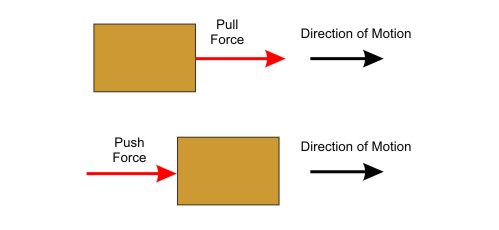
Figure Force is Directional
Of course, if multiple forces act on an object, the direction of motion of the object is the result of their combined effects.
Gravity forces are towards the center of mass of the objects. As a result we always experience gravity as a downward force.
Units of Force
Direct force and gravitational force are measured in newtons (after Sir Isaac Newton). One newton (N) is the force required to accelerate one kilogram of mass at a rate of one meter per second squared.
The general mathematical expression for force is
Force = (mass in kilograms) times (acceleration in meters per second squared), or
F = ma
where F = force in newtons, m = mass in kilograms, and a = acceleration in meters per second squared
Gravitational Force and Weight
Gravitational force is denoted by the symbol g. Gravitational force at sea level on earth is 9.8 newtons per 1 kg of mass.
Weight is a force and is denoted by the symbol W. Weight is equal to mass times gravity force. Written mathematically, it is
W = mg
So the weight of a mass of 50kg is
W = 50kg X 9.8 N
W = 490 N
The next image shows weight being measured with a force scale graduated in newtons. Using the formula, the weight was calculated to be 4.057 newtons. The scale has been adjusted so that the reading is taken at the top edge of the indicator
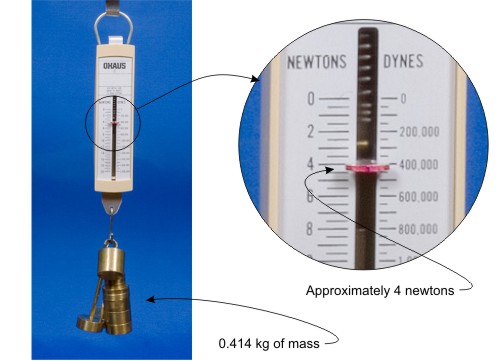
Figure Weight of Known Masses being measured in newtons.
The video clip shows the masses being weighed.
Video Weighing Known Masses
The image below shows an object (piece of aluminium) of unknown mass being weighed.
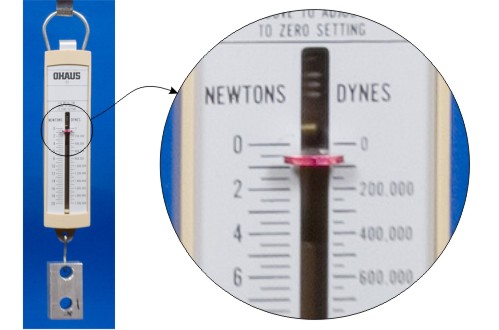
Figure Weight of Object (0.5 N [newtons]) of Unknown Mass
The next video clip shows the objected being weighed.
Video Weighing an Unknown Mass
Now that we know the weight of the object is 0.5 newtons, we can easily find its mass by using the relationship between weight, mass and gravitational force
W (newtons) = m (kilograms) X g (newtons)
0.5 N = m X 9.8 N
0.5 / 9.8 = m
.051 kg -= m
The mass of the object is 0.51 kilograms (or 51 grams).
For Additional Information
The following sites have additional information on these topics
- Force and its representation
- Gravity and the force of gravitation
- Force and its representation
- The force be with you
When you are ready, go to Your Turn